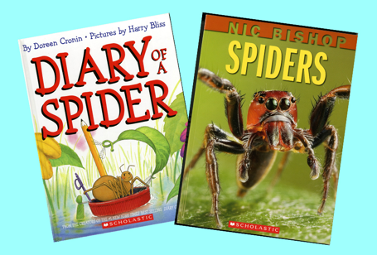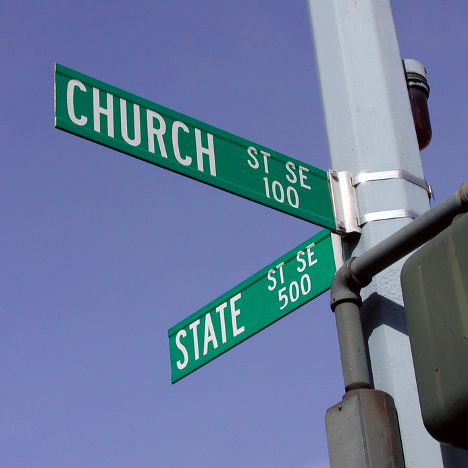
In 1964, Martin Luther King Jr. was awarded the Nobel Peace Prize and Congress passed the Civil Rights Act. A year later the Voting Rights Act and Great Society legislation followed. Schools in the South were being integrated. It was the Summer of Love in San Francisco. It was the year I graduated from law school at UC Berkeley. I truly believed we were entering the post-racial era.
Flash back 20 years to 1945; I was an eight year old 3rd grader at Isaac I. Stevens Elementary. America was fighting WWII on two fronts. Gas and sugar were rationed and Ted Williams was flying Marine F4U’s in the Pacific theater.
Put me in coach. I can cover left field ‘til “The Splendid Splinter” comes home.
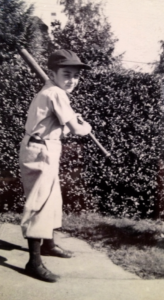 Times were lean for the country, but it wasn’t bad for an 8-year-old kid in Seattle. Isaac I. Stevens Elementary stands at the north end of Capitol Hill, a mixed neighborhood of older upscale, middle and lower income families. Within its boundaries are two Catholic schools, a Congregational Church, and a synagogue – and in 1944 its southern edge was Seattle’s Central Area, a mostly black neighborhood, where the edges were mixed and families lived in harmony while racially restrictive covenants were preventing other black families from buying in the white neighborhoods further north.
Times were lean for the country, but it wasn’t bad for an 8-year-old kid in Seattle. Isaac I. Stevens Elementary stands at the north end of Capitol Hill, a mixed neighborhood of older upscale, middle and lower income families. Within its boundaries are two Catholic schools, a Congregational Church, and a synagogue – and in 1944 its southern edge was Seattle’s Central Area, a mostly black neighborhood, where the edges were mixed and families lived in harmony while racially restrictive covenants were preventing other black families from buying in the white neighborhoods further north.
I feel lucky to have lived in a mixed neighborhood. My classmates were mostly white – Catholic, Jewish, and Protestant – but my friend Corky White was a Negro. I don’t know exactly where Corky’s family lived or where they went to church. That wasn’t important. He and I were friends and that’s what counted.
We sat together in Miss Jameson’s 3rd grade class studying Isaac Stevens, Washington’s first governor, doing times-tables, and learning how to write cursive. During recess, we joined our classmates on the playground for pick-up games of softball. I really liked him. I remember he was smaller than I was with short hair and dark skin. One day, I invited him to come home with me after school.
I don’t remember what or where we played, maybe catch in the backyard or a board game in the house. What I remember to this day is that when my father came home from his job at Todd’s Shipyard he and my mother had a quiet conversation in the kitchen before they sat me in the living room and told me not to bring Corky or any other Negroes home again. Not ever. They didn’t seem angry but the subject wasn’t up for discussion. I complied though I never understood. Still don’t.
We moved away from Capitol Hill when I was in the 5th grade and that was the last time I saw or heard of Corky White. Last year, on MLK weekend, I wrote up the story of how my parents’ racial animus interfered with that childhood friendship and posted it as a blog called, We’ll Never Get Over Slavery ( http://www.jackbernardstravels.com/well-never-get-slavery/ ). When It got a surprising amount of good feedback I shared it on Facebook and with my friend, Ed Moon, one of the first African-American pilots at Pan Am, who shared it with his wide network of readers too.
And… here’s where the story gets woo-woo…
One of the people on Ed’s distribution list is a former Missouri Congressman named 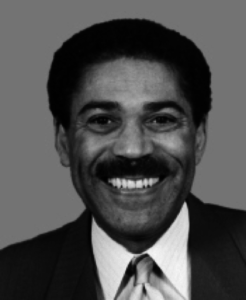 William L. “Bill” Clay (pictured right) who retired from the House of Representatives in 2001 after representing his St. Louis district for 32 years. Not surprisingly, after so many years in Congress, Bill Clay decided to stay in the DC area after retirement. When he read my post about Corky he emailed Ed to say he had a friend living in Maryland who grew up in Seattle and goes by the nickname “Corky” White. A few emails with Bill and a few more directed to “Patsy” White (a shared email address) revealed that Cortez A. White of Rockville, Maryland, in a stranger than fiction way, was my childhood friend Corky. Six degrees of separation.
William L. “Bill” Clay (pictured right) who retired from the House of Representatives in 2001 after representing his St. Louis district for 32 years. Not surprisingly, after so many years in Congress, Bill Clay decided to stay in the DC area after retirement. When he read my post about Corky he emailed Ed to say he had a friend living in Maryland who grew up in Seattle and goes by the nickname “Corky” White. A few emails with Bill and a few more directed to “Patsy” White (a shared email address) revealed that Cortez A. White of Rockville, Maryland, in a stranger than fiction way, was my childhood friend Corky. Six degrees of separation.
I often wondered what happened to Corky, but I never imagined I’d find out. The two of us are 80 now. Life took us in different directions, across the country and around the world, after those days at Isaac I. Stevens Elementary. I wanted to know how his story unfolded. He didn’t have any idea that he had played an important role in the evolution of my racial awareness. I was curious to know more about him, but a little fearful. Would his story be positive? Would my curiosity embarrass him? Had his life been difficult? Was it racist to ask such a question? Would an African-American kid from the segregated Central Area in Seattle have an inspiring story or one of struggle? The last thing I wanted was to be seen as a white guy writing about his poor black childhood friend. It could be awkward.
It turns out that Corky’s story is not much different from my own. He continued in Seattle Public Schools through high school and went on to the University of Washington, just as I did. With a degree in marketing and an engineering background, Corky started his career path at Boeing then accepted a job with the Buick Motor Company in Flint, Michigan. Five years later a headhunter in DC recruited him to help the government analyze the new safety standards for motor vehicles. In DC, he was offered a job with the management team of the WSSC (Washington Suburban Sanitary Commission), the agency that manages water and wastewater for the Maryland counties adjacent to Washington. While at WSSC, he was selected to attend MIT, as a Sloan Fellow, where he earned a Masters in Management. He was subsequently appointed to lead the agency as General Manager/CEO. He told me recently that since his retirement in 1999 he has “done nothing but enjoy (his) three children and seven grandchildren (here) in Montgomery County, MD.” Here he is with his wife, Patsy. Looks like a happy man to me.
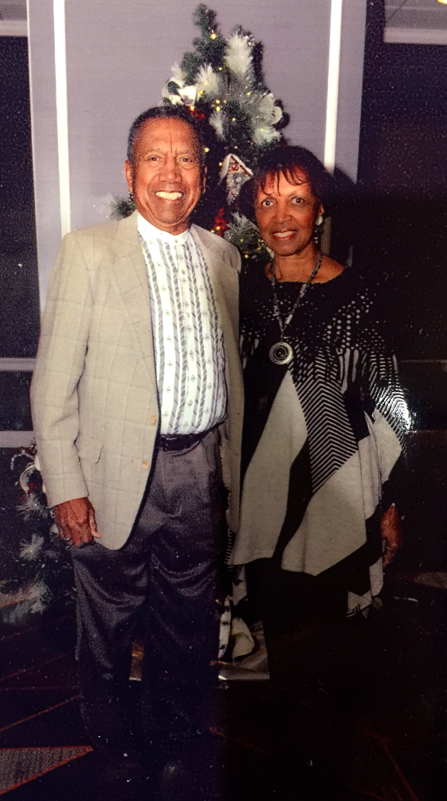
Monday is Martin Luther King Jr. Day, and it feels good to be able to tell this story as the holiday approaches. I was wrong in 1965 when I imagined the advent of a post-racial era, and though there has been progress, there have also been setbacks. My dream of a post-racial America tanked with the assassinations of Martin Luther King Jr. in June of 1968 and Robert F. Kennedy in August of the same year. As I said in “We’ll Never Get Over Slavery” the racial divide in America is still an open wound – Trayvon Martin, Michael Brown, Tamir Rice, Eric Garner, Freddy Gray, Philando Castile, and Charlottesville. Black lives do matter. We need to do better.
I don’t know how it feels to live inside a black skin, but I have my own upsetting story related to the MLK holiday. In 1996 I wrote a letter to the Salt Lake Tribune to decry the fact that despite Martin Luther King Day’s designation as a national holiday, the State of Utah chose not to observe it. Not only did it not recognize the holiday, it directed attention away by opening its annual legislative session every year on that day without mention or observance of either the Reverend King or the holiday.
My letter to the Tribune called out Utah officials, citing them as racists for ignoring this important national holiday. After my letter was published, I received two handwritten death threats in letters delivered to my home address. Gratefully, nothing happened; I wasn’t harmed or further intimidated, but it definitely put me on alert as I left home in the morning and arrived back in the evening. Utah began observing the MLK Day holiday the following year.
I’m looking forward to this upcoming weekend as a sober reminder of our black and white struggle with the legacy of slavery but also our aspirational goal of equal opportunity for all Americans. On a personal level I’ll celebrate my friendships with friends like Corky White, Bill Clay, Ed Moon, Stephan Blanford and others. Reconnecting with Corky was a gift. Thanks to Ed and Bill for their part in bringing the gift home and completing the circle.
This is a picture Corky sent me of the Isaac I. Stevens Elementary safety patrol the student group that helped kids cross streets near the school. Corky is in the front row lower right. I’m not in the picture though I was on the safety patrol at the same time. 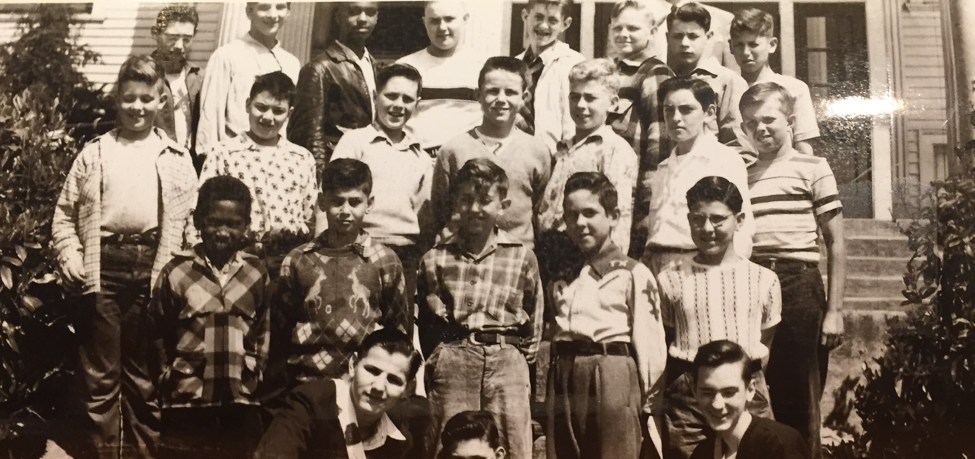
Friendships in Black and White.
PS: In yet another instance of six degrees of separation; when I told my friend and neighbor, retired African-American judge George Holifield, the Corky story he laughed and asked me to say hello. Yes, it’s true, he and Corky were friends and classmates at Garfield High School.






























